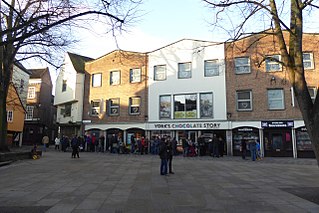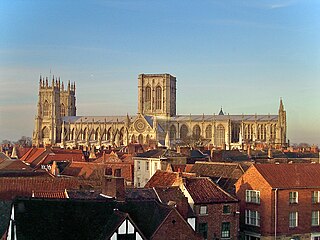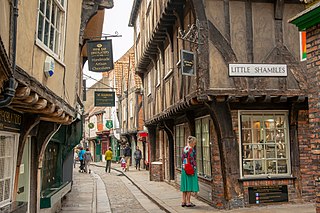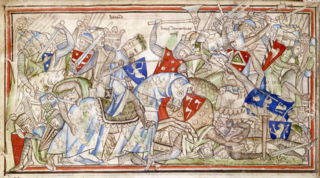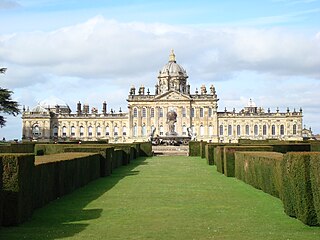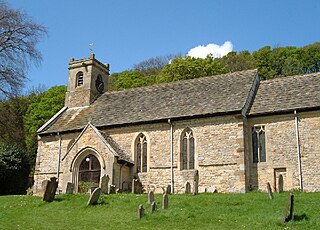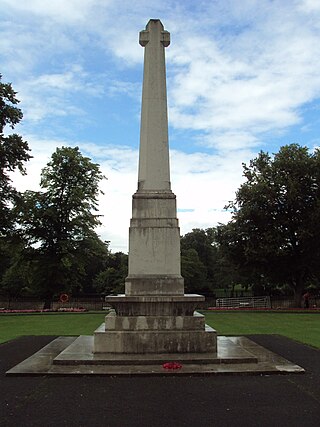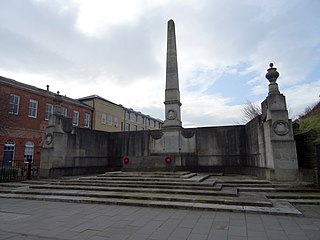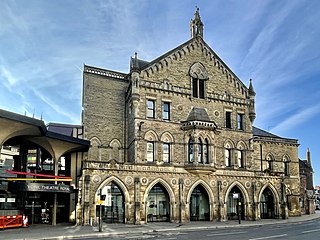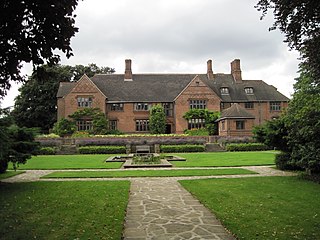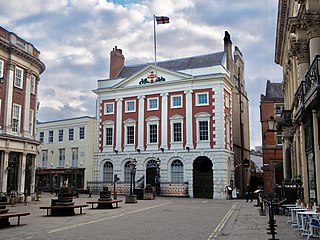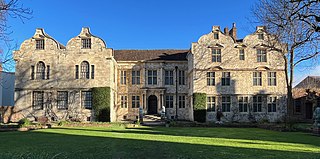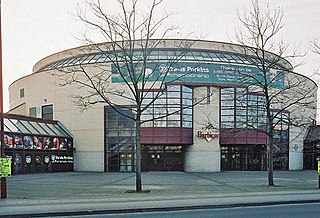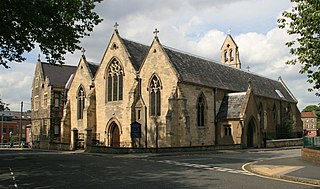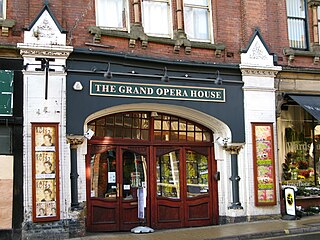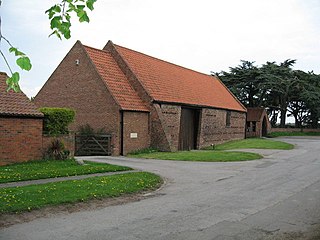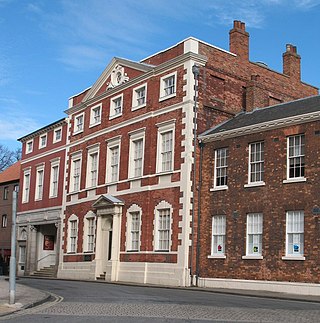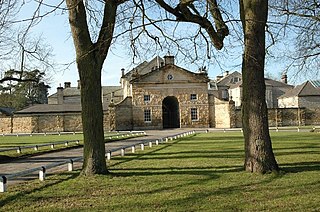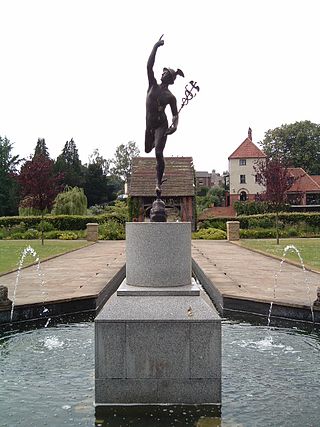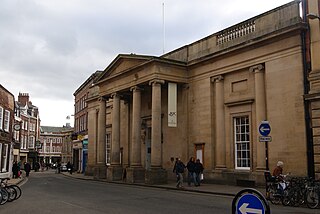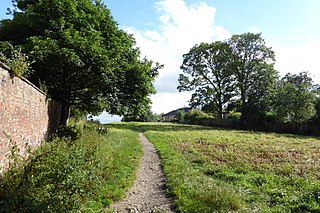37 Sights in York, United Kingdom (with Map and Images)
Legend
Welcome to your journey through the most beautiful sights in York, United Kingdom! Whether you want to discover the city's historical treasures or experience its modern highlights, you'll find everything your heart desires here. Be inspired by our selection and plan your unforgettable adventure in York. Dive into the diversity of this fascinating city and discover everything it has to offer.
Sightseeing Tours in YorkActivities in YorkYork's Chocolate Story is a visitor attraction and chocolate museum on King's Square, in York. Opened in March 2012, it shows the history of chocolate making in York, including the Rowntree's factory which opened in 1890, owned since 1988 by Nestlé. The attraction also includes a detailed history of chocolate and its beginnings in modern-day Mexico and how it spread to Europe. The tour emphasizes Hernán Cortéz and the monopoly he had on the newly discovered plant. The visitor will experience a detailed history of chocolate in York with pre-recorded videos of actors portraying members of the Rowntree family and the Terry family. The tour includes a detailed explanation of how chocolate was and is made to this day including an interactive chocolate-making process where the visitor can create their own chocolate lolly. The museum also includes a wide selection of treats to purchase after the tour in the gift shop.
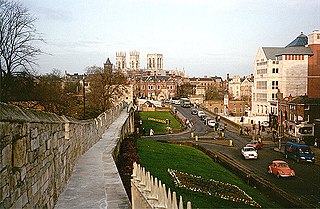
York has, since Roman times, been defended by walls of one form or another. To this day, substantial portions of the walls remain, and York has more miles of intact wall than any other city in England. They are known variously as York City Walls, the Bar Walls and the Roman walls. The walls are generally 13 feet (4m) high and 6 feet (1.8m) wide. They are the longest town walls in England.
York Minster, formally the Cathedral and Metropolitical Church of Saint Peter in York, is an Anglican cathedral in the city of York, North Yorkshire, England. The minster is the seat of the archbishop of York, the second-highest office of the Church of England, and is the mother church for the diocese of York and the province of York. It is administered by its dean and chapter. The minster is a Grade I listed building and a scheduled monument.
The Shambles is a historic street in York, England, featuring preserved medieval buildings, some dating back as far as the 14th century. The street is narrow, with many timber-framed buildings with jettied floors that overhang the street by several feet. It was once known as The Great Flesh Shambles, probably from the Anglo-Saxon Fleshammels, the word for the shelves that butchers used to display their meat. In 1885, thirty-one butchers' shops were located along the street, but none remain today.
Jorvik Viking Centre is a museum and visitor attraction in York, England, containing lifelike mannequins and life-size dioramas depicting Viking life in the city. Visitors are taken through the dioramas in 'time capsule' carriages equipped with speakers. It was created by York Archaeological Trust and opened in 1984. Its name is derived from Jórvík, the Old Norse name for York and the surrounding Viking Kingdom of Yorkshire.

The York Castle Museum is a museum located in York, North Yorkshire, England, on the site of York Castle, which was originally built by William the Conqueror in 1068. The museum itself was founded by John L. Kirk in 1938, and is housed in prison buildings which were built on the site of the castle in the 18th century, the debtors' prison and the female prison.
7. Battle of Stamford Bridge Memorial
The Battle of Stamford Bridge took place at the village of Stamford Bridge, East Riding of Yorkshire, in England, on 25 September 1066, between an English army under King Harold Godwinson and an invading Norwegian force led by King Harald Hardrada and the English king's brother Tostig Godwinson. After a bloody battle, both Hardrada and Tostig, along with most of the Norwegians, were killed. Although Harold Godwinson repelled the Norwegian invaders, his army was defeated by the Normans at Hastings less than three weeks later. The battle has traditionally been presented as symbolising the end of the Viking Age, although major Scandinavian campaigns in Britain and Ireland occurred in the following decades, such as those of King Sweyn Estrithson of Denmark in 1069–1070 and King Magnus Barefoot of Norway in 1098 and 1102–1103.
8. Castle Howard
Castle Howard is an English country house in Henderskelfe, North Yorkshire, 15 miles (24 km) north of York. A private residence, it has been the home of the Carlisle branch of the Howard family for more than 300 years. Castle Howard has been used as a filming location in several films and television shows, including in Granada Television's 1981 television adaptation of Evelyn Waugh's Brideshead Revisited and in a 2008 film adaptation.
9. York Art Gallery
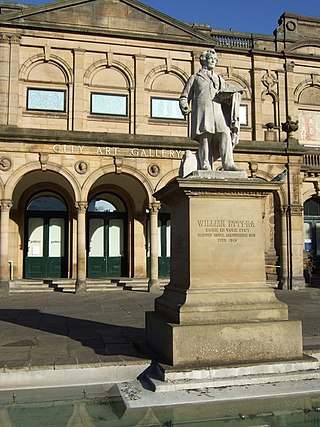
York Art Gallery is a public art gallery in York, England, with a collection of paintings from 14th-century to contemporary, prints, watercolours, drawings, and ceramics. It closed for major redevelopment in 2013, reopening in summer of 2015. The building is a Grade II listed building and is managed by York Museums Trust.
10. Church of Saint Oswald
The Church of Saint Oswald, King and Martyr is an Anglican church serving the village and parish of Oswaldkirk, North Yorkshire, England. It is located along the main road passing through the village, 1.5 miles (2.4 km) east of Ampleforth Abbey.
Wikipedia: Church of Saint Oswald, King and Martyr, Oswaldkirk (EN)
11. Nunnington Hall
Nunnington Hall is a country house situated in the English county of North Yorkshire. The river Rye, which gives its name to the local area, Ryedale, runs past the house, flowing away from the village of Nunnington. A stone bridge over the river separates the grounds of the house from the village. Above, a ridge known as Caulkley's Bank lies between Nunnington and the Vale of York to the south. The Vale of Pickering and the North York Moors lie to the north and east. Nunnington Hall is owned, conserved and managed as a visitor attraction by the National Trust.
12. War Memorial
The York City War Memorial is a First World War memorial designed by Sir Edwin Lutyens and located in York in the north of England. Proposals for commemorating York's war dead originated in 1919 but proved controversial. Initial discussions focused on whether a memorial should be a monument or should take on some utilitarian purpose. Several functional proposals were examined until a public meeting in January 1920 opted for a monument. The city engineer produced a cost estimate and the war memorial committee engaged Lutyens, who had recently been commissioned by the North Eastern Railway (NER) to design their own war memorial, also to be sited in York.
13. Sheriff Hutton Castle
Sheriff Hutton Castle is a ruined quadrangular castle in the village of Sheriff Hutton, North Yorkshire, England. The site of the castle is 10 miles (16 km) north of York, and 8 miles (13 km) south-east of Easingwold.
14. Railway Workers War Memorial
The North Eastern Railway War Memorial is a First World War memorial in York in northern England. It was designed by Sir Edwin Lutyens to commemorate employees of the North Eastern Railway (NER) who left to fight in the First World War and were killed while serving. The NER board voted in early 1920 to allocate £20,000 for a memorial and commissioned Lutyens. The committee for the York City War Memorial followed suit and also appointed Lutyens, but both schemes became embroiled in controversy. Concerns were raised from within the community about the effect of the NER memorial on the city walls and its impact on the proposed scheme for the city's war memorial, given that the two memorials were planned to be 100 yards apart and the city's budget was a tenth of the NER's. The controversy was resolved after Lutyens modified his plans for the NER memorial to move it away from the walls and the city opted for a revised scheme on land just outside the walls; coincidentally the land was owned by the NER, whose board donated it to the city.
15. York Theatre Royal
York Theatre Royal is a theatre in St Leonard's Place, in York, England, which dates back to 1744. The theatre currently seats 750 people. Whilst the theatre is traditionally a proscenium theatre, it was reconfigured for a season in 2011 to offer productions in-the-round. The theatre puts on many of its own productions, as well as hosting touring companies, one of which is Pilot Theatre, a national touring company which often co-produces its work with the theatre. Additionally the main stage and studio are regularly used by local amateur dramatic and operatic societies. York Theatre Royal was one of the co-producers of the historic York Mystery Plays 2012 which were staged in York Museum Gardens between 2–27 August. The theatre reopened on Friday 22 April 2016 following a £6million redevelopment, with a new roof, an extended and re-modelled front of house area, a refurbished and redecorated main auditorium and with major improvements to access and environmental impact.
16. Bar Convent Museum

The Bar Convent Living Heritage Centre, at Micklegate Bar, York, England, established in 1686, is the oldest surviving Catholic convent in the British Isles. The laws of England at this time prohibited the foundation of Catholic convents and as a result of this, the convent was both established and operated in secret.
17. York Cold War Bunker
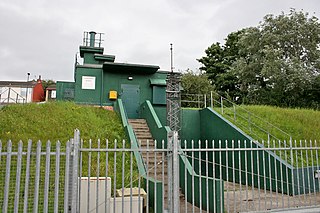
The York Cold War Bunker is a two-storey, semi-subterranean, Cold War bunker in the Holgate area of York, England, built in 1961 to monitor nuclear explosions and fallout in Yorkshire, in the event of nuclear war.
18. Goddards Garden
Goddards House and Garden is an Arts and Crafts house in Dringhouses, York, England. It was built in 1927 for Noel and Kathleen Terry of the famed chocolate-manufacturing family Terry's with the house designed by local architect Walter Brierley and the garden by George Dillistone. The National Trust acquired the property in 1984 to use as regional offices and the garden is open to visitors seasonally. The house is a Grade I listed building and the carriage entrance to the property is Grade II* listed.
19. Mansion House
The Mansion House in York, England is the home of the Lord Mayors of York during their term in office. It is situated in St Helen's Square, where York's Coney Street and Lendal intersect in the city centre. It is built in an early Georgian style. The Mansion House is the earliest purpose-built house for a Lord Mayor still in existence, and predates the Mansion House in London by at least twenty years.
20. Treasurer's House
The Treasurer's House in York, North Yorkshire, England, is a Grade I listed historic house owned by the National Trust, who also maintain its garden. It is located in Minster Yard, directly to the north of York Minster.
21. Yorkshire Museum of Farming

The Yorkshire Museum of Farming is located in Murton Park near York in England. It is housed on a grass field site of approximately 14 acres (5.7 ha), and is the only museum in the district specifically dedicated to the subject of farming. In the autumn of 2010, the museum was awarded full accreditation status by the Museums, Libraries and Archives Council.
22. Bishopthorpe Palace
Bishopthorpe Palace is the official residence of the Archbishop of York at Bishopthorpe, North Yorkshire, England. The palace is located on the River Ouse and is approximately 3 miles (4.8 km) south of York, which is the location of the diocese's cathedral, York Minster.
23. York Barbican
York Barbican is an indoor entertainment venue located in York, England. Named after the nearby barbican attached to Walmgate Bar, the venue hosts a busy calendar of live music, comedy and sports, as well as business events and conferences. It has a 1,500 seating capacity and a 1,900 standing capacity.
24. Barley Hall
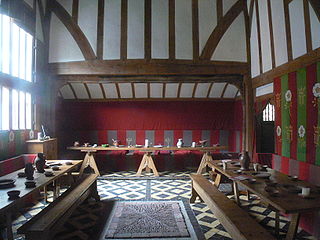
Barley Hall is a reconstructed medieval townhouse in the city of York, England. It was built around 1360 by the monks of Nostell Priory near Wakefield and extended in the 15th century. The property went into a slow decline and by the 20th century was sub-divided and in an increasingly poor physical condition. Bought by the York Archaeological Trust in 1987, it was renamed Barley Hall and heavily restored in a controversial project to form a museum. It is open to the public and hosts exhibitions.
25. St George's Catholic Church
St George's Roman Catholic church is located in the centre of the city of York, England, on George Street in the Diocese of Middlesbrough. The Church was designed by Joseph Hansom and was the first pro-Cathedral of the Diocese of Beverley.
26. Grand Opera House
The Grand Opera House is a theatre on the corner of Clifford Street and Cumberland Street in York, North Yorkshire, England. The structure, which hosts touring productions of plays, musicals, opera and ballet, as well as one-off performances by comedians, and other theatrical and musical events, is a Grade II listed building.
27. Poppleton Tithe Barn
The Nether Poppleton Tithe Barn is a tithe barn at Manor Farm in the village of Nether Poppleton in the unitary authority of City of York in the North of England. Research by dendrochronologists has shown that the tithe barn, which was built on the site of an old nunnery, is at least 450 years old.
28. Fairfax House
Fairfax House is a Georgian townhouse located at No. 27, Castlegate, York, England, near Clifford's Tower and York Castle Museum. It was probably built in the early 1740s for a local merchant and in 1759 it was purchased by Charles Gregory Fairfax, 9th Viscount Fairfax of Emley, who arranged for the interior to be remodelled by John Carr (architect). Fairfax was the widower of heiress Elizabeth Clifford, daughter of Hugh Clifford, 2nd Baron Clifford of Chudleigh: his inheritance from her death enabled him to purchase the house, which he intended as a home for his daughter from his first marriage, Ann Fairfax.
29. Hovingham Hall
Hovingham Hall is a country house built in the Palladian style in the village of Hovingham, North Yorkshire, England. It has been the seat of the Worsley family and the childhood home of the Duchess of Kent. It was built in the 18th century on a site the Worsleys have occupied since the 16th century.
30. Emperor Constantine
The Statue of Constantine the Great is a bronze statue depicting the Roman emperor Constantine I seated on a throne, commissioned by York Civic Trust and designed by the sculptor Philip Jackson. It was unveiled in 1998 and is situated on Minster Yard, outside York Minster. It commemorates the accession of Constantine as Roman emperor in AD 306 on this site, after the death of his father Constantius Chlorus in York.
31. Rowntree Park
Rowntree Park is a 20-acre (8.1 ha) park in York, England open to the public, featuring children's playgrounds, tennis courts, bowling greens, basketball court, skateboarding area and general areas for picnicking. The park also features a large lake, a canal and a water cascade, and is home to many ducks, swans and Canada geese. The park's outdoor swimming pool was demolished in the face of strong public protest in the 1980s.
32. York Unitarian Chapel
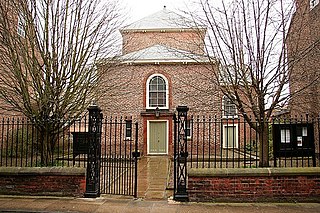
York Unitarian Chapel is a building on St. Saviourgate, York, England. It is a member of the General Assembly of Unitarian and Free Christian Churches, the umbrella organisation for British Unitarians.
33. National Centre for Early Music

The National Centre for Early Music (NCEM) is an organisation which encourages, promotes and disseminates early music. Located in York, England, it is based in the converted and extended, Grade I listed medieval church of St Margaret, Walmgate. Each year, the NCEM organises the York Early Music Festival.
34. Assembly Rooms
The York Assembly Rooms is an 18th-century assembly rooms building in York, England, originally used as a place for high class social gatherings in the city. The building is situated on Blake Street and is a Grade I listed building.
35. Lamel Hill Battery
Lamel Hill is a scheduled monument about 1 mile (1.6 km) south-east of the centre of York, England. It is on the grounds of The Retreat and the northern part of Walmgate Stray, and in some medieval documents it is referred to as Siward's Mill Hill, or Siward's How Mill, in reference to its previous use as the base of a windmill. However it should not be confused with another site known as Siward's Howe which is about 220 yards (200 m) further east. The hill isn't visible in the picture as it lies inside the wall on the left.
36. Micklegate Bar Museum
The City Walls Experience at Micklegate Bar is located in the southern gatehouse of the historical city walls of York, England. It is operated by the Jorvik Group and uses maps, display screens and video presentations to tell the story of the fortifications surrounding the city.
37. Roman Column
A Roman column stands in Minster Yard in the English city of York. Originally built around the first century, by the soldiers of Legio IX Hispana, it was reused by Legion VI in the 4th century. It is believed to have been part of a group of sixteen freestanding columns, supporting the walls of a basilica on the site.
Share
How likely are you to recommend us?
Disclaimer Please be aware of your surroundings and do not enter private property. We are not liable for any damages that occur during the tours.
